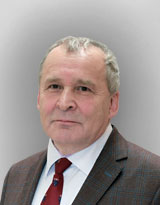Вам может быть интересно:
Архив журнала
Языковые границы политического дискурса на улицах ГДР в монографии Филиппа Дреезена «Границы дискурса: типы и функции речевого сопротивления на улицах ГДР»
- 778
- Рубрика: РАЗДЕЛ 7. РЕЦЕНЗИИ. ХРОНИКА
- Файл статьи: PDF
DOI: 10.26170/pl19-05-22
Аннотация: Рецензия на монографию: Dreesen Ph. Diskursgrenzen: Typen und Funktionen des sprachlichen
Widerstandes auf den Straßen der DDR // Diskursmuster/Discourse Patterns. Band 8 / Hrsg. von Beatrix Busse und Ingo
H. Warnke. Berlin/Boston: Walter de Gruyter GmbH & Co. KG, 2015. 426 S. Монография написана в рамках
философско-лингвистического направления. Автор работал с большим корпусом текстов — научными и ненаучными монографиями и сборниками, автобиографиями и частным собранием текстов. В корпус вошли некоторые архивные источники, в частности Министерства государственной безопасности ГДР. Останавливаясь на употреблении официального немецкого языка в ГДР, Ф. Дреезен отмечает его особенности: семантические характеристики, сокращения, сложные слова, неологизмы, новообразования на уровне слов, фразы и определения в родительном
падеже на уровне предложений, а также типы текста «лозунг», «петиция» и «домовая книга» на уровне текста.
При более подробном рассмотрении официального языка в ГДР становится ясно, что стиль письменной и устной
речи был не только канонизированным, но и в высшей степени ритуальным. Рассматриваемый в монографии дискурс Ф. Дреезен делит на две функциональные области — область официальных высказываний (господствующий
дискурс) и область невысказываемого (контрдискурс). Господствующий дискурс задает условия для возникновения
неявных высказываний о сопротивлении, что рассматривается на примере неявных высказываний, появлявшихся
при массовых протестах на улицах ГДР в с 1945 по 1989 г
Ключевые слова: политический дискурс; господствующий дискурс; улицы городов; немецкий язык; немецкие города; речевое сопровождение
Abstract: The article contains a review of the monograph: Dreessen Ph. Diskursgrenzen: Typen und Funktionen
des sprachlichen Widerstandes auf den Straßen der DDR // Diskursmuster/Discourse Patterns. Band 8 / Hrsg. von Beatrix
Busse und Ingo H. Warnke. Berlin/Boston: Walter de Gruyter GmbH & Co. KG, 2015. 426 S. The monograph is written within the framework of philosophic-linguistic approach. The author has worked with a large corpus of texts – scientific and
popular monographs and collections, autobiographies and a private collection of articles. Some archive sources, and specifically those of the Ministry for State Security of the GDR are part of the corpus. Studying the functioning of the official German language in the GDR, Ph. Dreessen highlights its peculiar features: semantic characteristics, shortenings, compounds,
neologisms, new phenomena on the level of the word, phrases and attributes in the Genitive case on the level of the sentence
and the types of texts “slogan”, “petition”, “house register” on the level of the text. A close look at the official German language in the GDR makes it clear that the style of written and oral speech was not only canonized but also highly ritual.
Ph. Dreessen subdivides the discourse under study into two functional areas – the sphere of official utterances (institutionalized discourse) and the sphere of the non-said (counterdiscourse). The institutionalized discourse determines the conditions
for emergence of indirect utterances about resistance, which is studied on the example of indirect utterances generated during mass protests in the streets of the GDR from 1945 to 1989
Key words: political discourse; leading discourse; streets of the cities; German; German cities; verbal support
Для цитирования:
Какзанова, Е. М. Языковые границы политического дискурса на улицах ГДР в монографии Филиппа Дреезена «Границы дискурса: типы и функции речевого сопротивления на улицах ГДР» /
Е. М. Какзанова // Политическая лингвистика. – 2019. – №5. – С. 202-206. DOI 10.26170/pl19-05-22.
For citation
Kakzanova, E. M. Linguistic boundaries of political discourse in the streets of GDR in the monograph by Philipp Dreessen “Discourse Boundaries: Types and Functions of Speech Resistance in the Streets of GDR” / E. M. Kakzanova // Political Linguistics. – 2019. – №5. – P. 202-206. DOI 10.26170/pl19-05-22.


